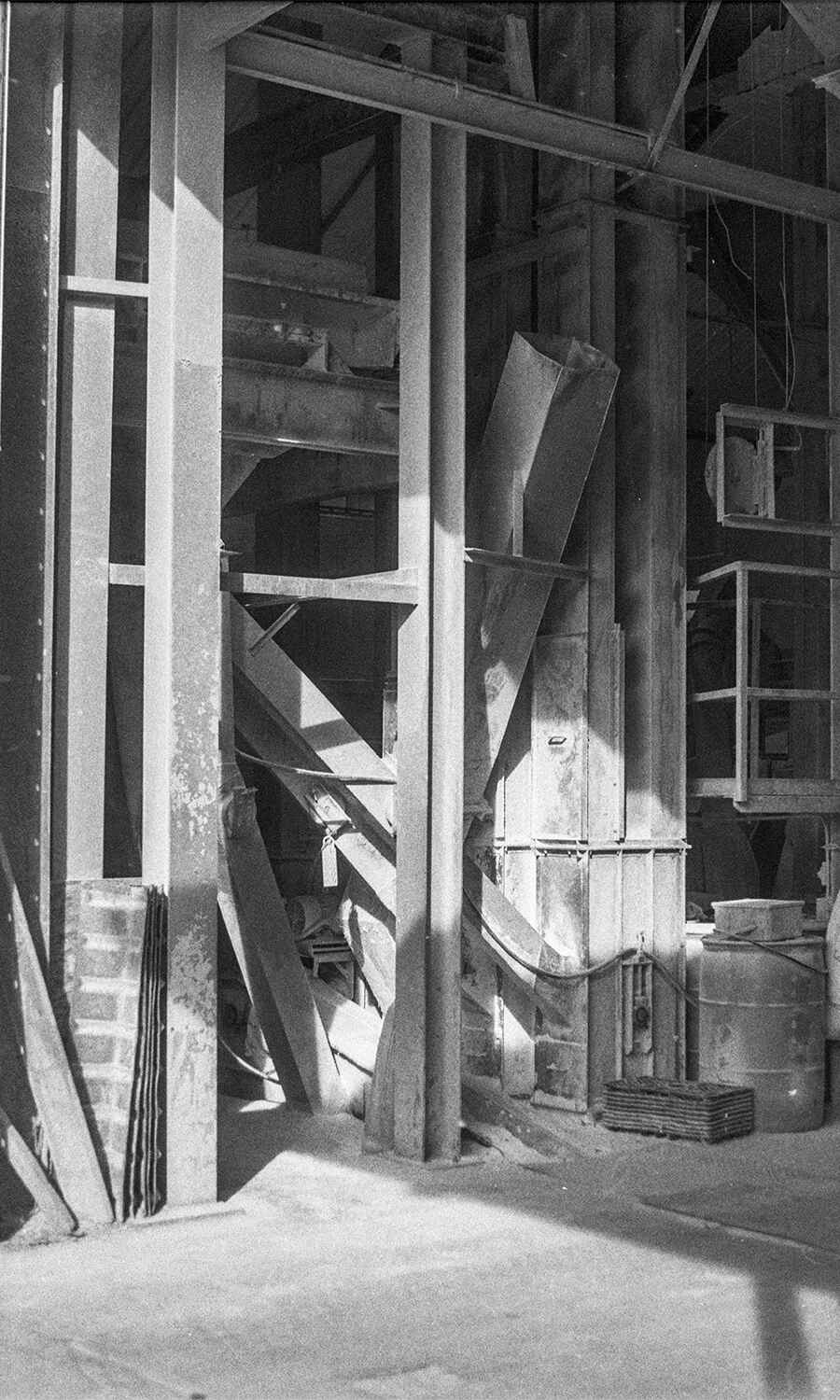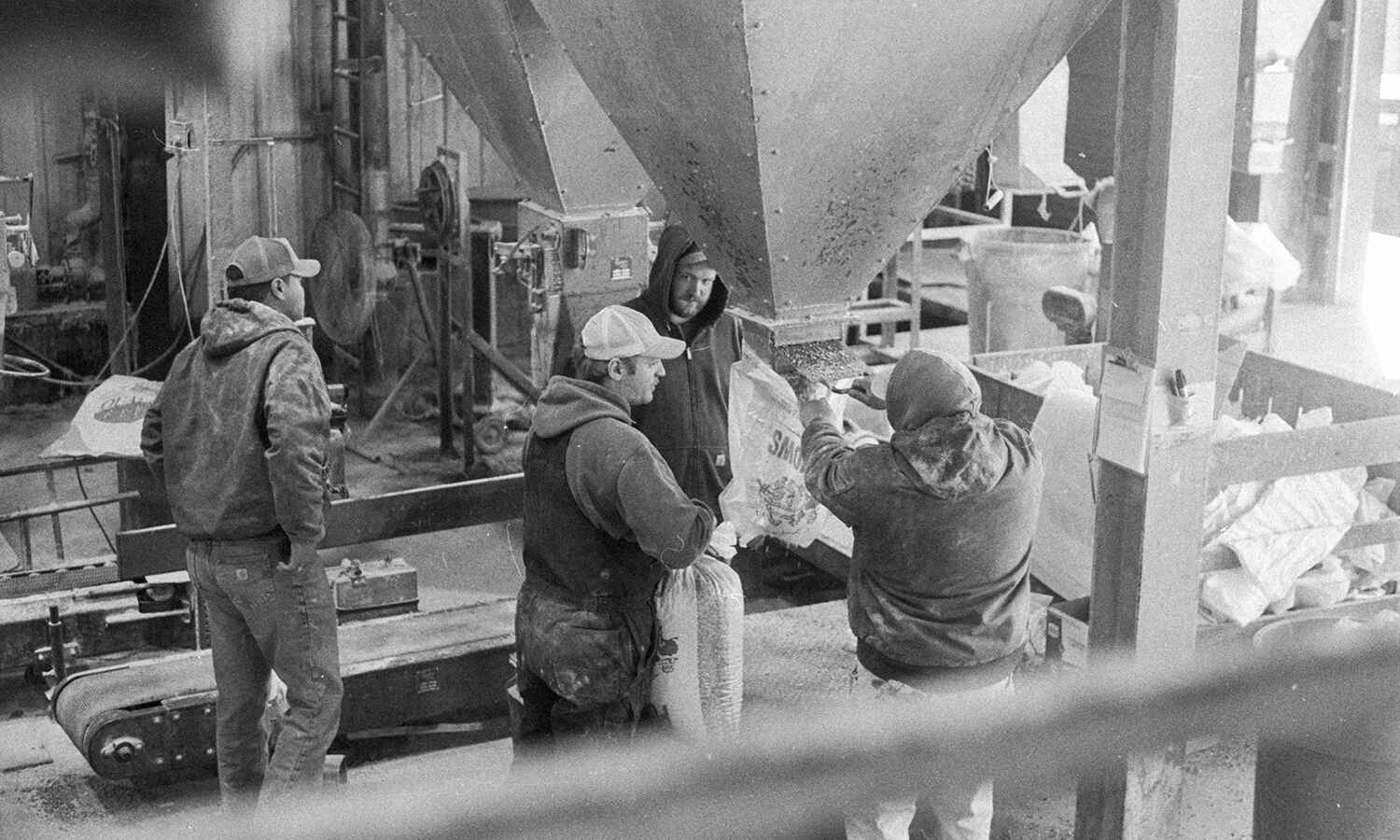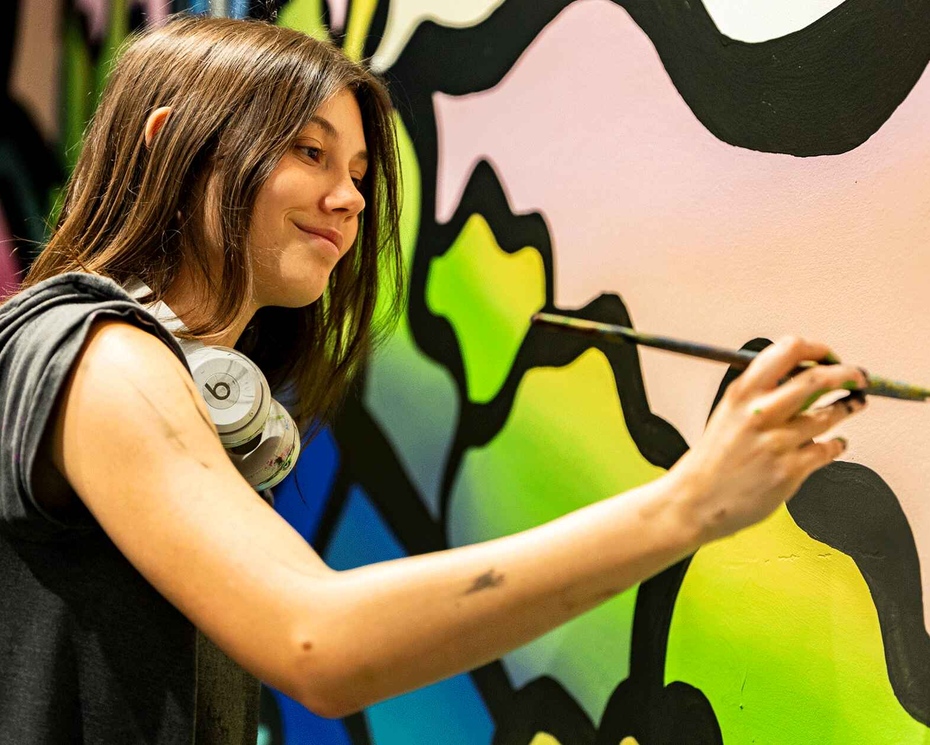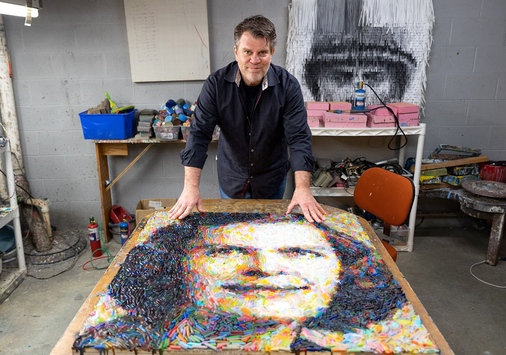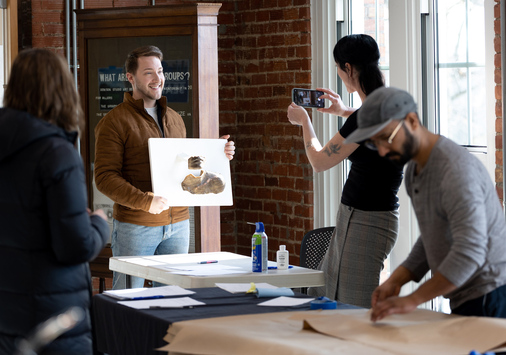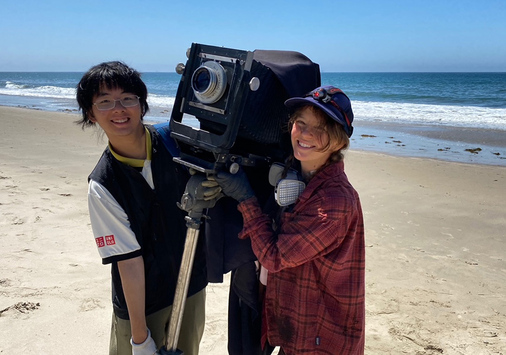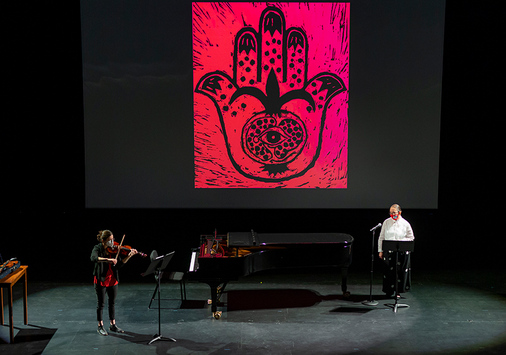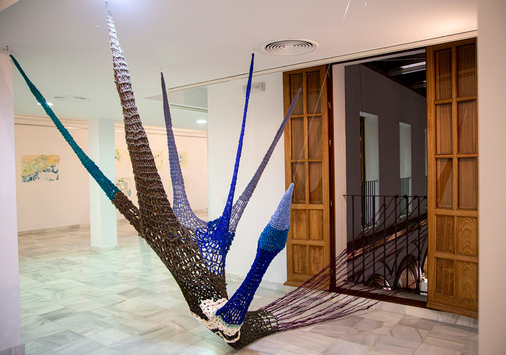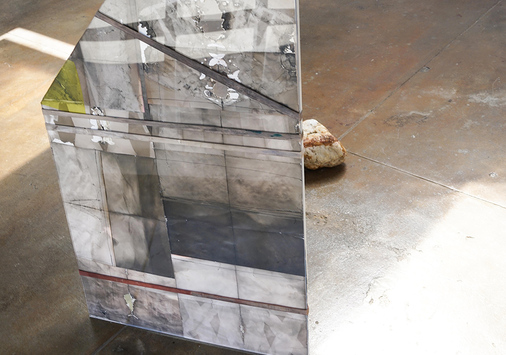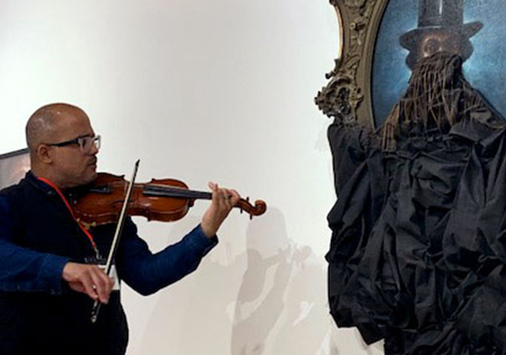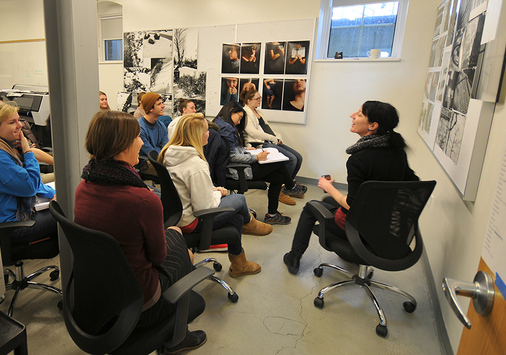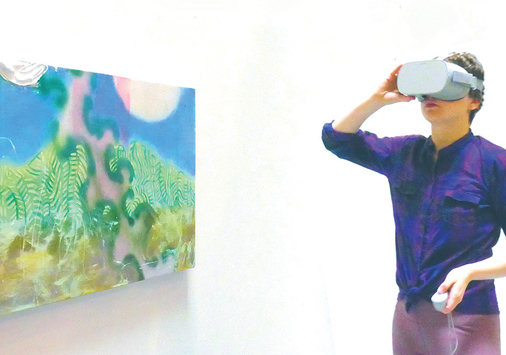
The students in Professor Sheilah ReStack’s Darkroom and Documentary class of Spring 2023 were not only introduced to working with analog cameras and film, but also an introduction to documentary photographic practices. The intermediate class requires some familiarity with photography in order to take it, and is sought after by students who wish to work with film. The class begins with 35 mm film, and works up to medium format film by the end of the semester. The documentary project prompts range from document of the self for the first project, to projects where students have to document something or someone previously unknown to themselves.
One student, Ichhit Joshi, a Data Analytics major from Nepal, decided to document the Granville Milling Company, located on Main Street, Granville. He spent hours observing the work that goes on to mill and refine the grain, as well as the customer service and interaction. The photos that resulted show a document of an integral Granville business that most students at Denison have not been inside of, or gotten to know, during their time here. Ichiit’s project was so inspiring for him, that he decided to continue this project of ‘photographing the unknown’ for his final project. He shot over 20 rolls of film, and was able to produce a magazine with images ranging from behind the scenes, to the structures and buildings themselves, to the customers picking up bags of feed.
Mill owner, John Huber, states, “He did a really good job — it was such a great project. We love the photos he took, and he gave us some that we are going to frame and hang in our offices here.” Ichiit states, “Engaging in the “Seed to Feed: A Journey Through Granville Milling Company” project was a rewarding experience that provided me with valuable insights into the world of local businesses and film photography.
As I delved into the project, I had the opportunity to observe the Granville Milling Company’s operations closely. It was fascinating to witness the blend of traditional practices and modern techniques that define the mill’s daily routines.
Throughout the project, I learned the art of visual storytelling. Each photograph became a piece of a larger narrative, showcasing the dedication and hard work of the mill’s employees. Their camaraderie and enthusiasm were evident, and capturing candid moments brought their stories to life.
A surprising find was the strong bond between the mill and the community. Despite its unassuming presence, the mill held significant importance in the lives of many. Interactions in the retail store revealed a genuine connection between employees, customers, and the mill, emphasizing its role in the community.
My photography aimed to spotlight the hard work of employees and their contributions to the mill’s operations. I also documented customer interactions, showcasing their impact on the mill’s success and reinforcing its local significance.
In essence, this project taught me the power of visual storytelling and its ability to convey meaningful narratives. It allowed me to shed light on the unsung heroes of our communities – local businesses and the people who drive their success. Through my lens, I aimed to celebrate their contributions and provide a glimpse into their world.”
Professor ReStack remarks that she gets excited when she sees students become passionate about photography, “I love seeing students start to use the photograph as a tool to get to know or understand the world in ways they would not have thought possible.”
